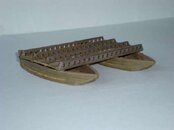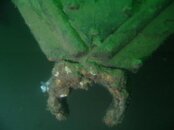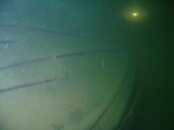- Messages
- 5,141
- Reaction score
- 4,150
- # of dives
- 5000 - ∞
Dale,
Very Impressive!
It is becoming a habit with you to produce high quality semi professional dive videos of vintage diving. So educational and so enjoyable to view, not once but several times.
Many years ago Peter Vasapopoulis (spelling?) produced the Canadian Dive magazine, (which I have all but 1or 2 copies) published an article about the crystal clear Canadian lakes and how the were used by Canadians and Americans during WW 11 as test beds for various items of UW equipment. Have you ever dove in lakes that were used in WW11? Or have you ever investigated where these lakes were located?
Maybe Stoo who was around in that time frame and has made 5000 dives in 40 years in the frozen north can chime in as to the names and location of the lakes.
The twin 40s aka 44s were first joined by a local dive shop owner Bob Reutherford in late 1950s. (see Legends of Diving; Sea Sabres Signaling system) US Divers could not sell them as ladies or juvenile tanks, so he purchased all of US Divers inventory, slapped them on a Sea Craft back plate and called then the "Orange County twin 44s." (I made a post about them some time ago)
I have 4 sets (8 tanks) which I used for about 40 years, they were and remain the most comfortable rig I have ever dove. Some day I will allow them to be pried from my cold clammy hands--but not yet~
The back plate has been duplicated right down to the webbing crossing at the neck line which a late model tube sucking bubble blower diving revisionist insists on identifying as "Luis type harness." An embarrassment to all.
You are indeed one of God's frozen chosen divers...Keep up the good work........
SDM
Very Impressive!
It is becoming a habit with you to produce high quality semi professional dive videos of vintage diving. So educational and so enjoyable to view, not once but several times.
Many years ago Peter Vasapopoulis (spelling?) produced the Canadian Dive magazine, (which I have all but 1or 2 copies) published an article about the crystal clear Canadian lakes and how the were used by Canadians and Americans during WW 11 as test beds for various items of UW equipment. Have you ever dove in lakes that were used in WW11? Or have you ever investigated where these lakes were located?
Maybe Stoo who was around in that time frame and has made 5000 dives in 40 years in the frozen north can chime in as to the names and location of the lakes.
The twin 40s aka 44s were first joined by a local dive shop owner Bob Reutherford in late 1950s. (see Legends of Diving; Sea Sabres Signaling system) US Divers could not sell them as ladies or juvenile tanks, so he purchased all of US Divers inventory, slapped them on a Sea Craft back plate and called then the "Orange County twin 44s." (I made a post about them some time ago)
I have 4 sets (8 tanks) which I used for about 40 years, they were and remain the most comfortable rig I have ever dove. Some day I will allow them to be pried from my cold clammy hands--but not yet~
The back plate has been duplicated right down to the webbing crossing at the neck line which a late model tube sucking bubble blower diving revisionist insists on identifying as "Luis type harness." An embarrassment to all.
You are indeed one of God's frozen chosen divers...Keep up the good work........
SDM






